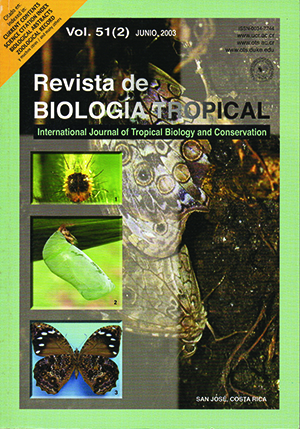Abstract
Salinity is an important variable influencing the density and diversity of rotifers. Studies on salt tolerance of rotifers have so far concentrated on euryhaline species while very little information is available on noneuryhaline taxa. In the present work, we have evaluated the combined effects of Chlorella vulgaris and sodium chloride on the population growth of two freshwater rotifers B. calyciflorus and B. patulus. A 24 hr acute tolerance test using NaCl revealed that B. calyciflorus was more resistant (LC50 = 3.75 ± 0.04 g l-1) than B. patulus (2.14 ± 0.09 g l-1). The maximal population density (mean±standard error) for B. calyciflorus in the control at 4.5 X106 cells ml-1 (algal level) was 80 ±5 ind. ml-1, which was nearly a fifth of the one for B. patulus (397 ± 7 ind. ml-1) under comparable conditions. Data on population growth revealed that regardless of salt concentration, the density of B. calyciflorus increased with increasing food levels, while for B. patulus, this trend was evident only in the controls. Regardless of salt concentration and algal food level, the day of maximal population density was lower (4 ± 0.5 days) for B. calyciflorus than for B. patulus (11 ±1 day). The highest rates of population increase (r values) for B. calyciflorus and B. patulus were 0.429 ± 0.012 and 0.367 ± 0.004, respectively, recorded at 4.5 X106 cells ml-1 of Chlorella in the controls. The protective role of algae in reducing the effect of salt stress was more evident in B. calyciflorus than B. patulus.##plugins.facebook.comentarios##

This work is licensed under a Creative Commons Attribution 4.0 International License.
Copyright (c) 2003 Revista de Biología Tropical
Downloads
Download data is not yet available.


